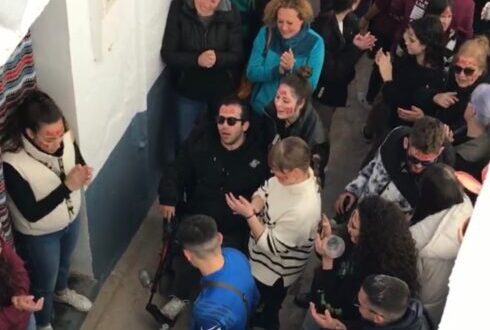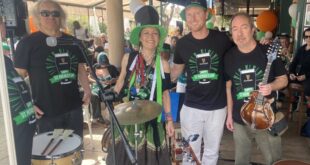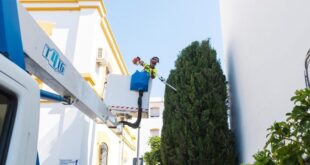Jane Whyatt
Today, with dating apps like Bumble and Tinder available to hook up with women, men don’t need to sing and play music under their balconies as Romeo and Juliet did in Shakespeare’s drama.
But in the tiny, remote village of Cañar near Granada, that’s exactly what they do.
The minstrels begin their annual village tour every year at 2 o’clock on 28th December. All of the young men sing to all of the young girls. They also use red paint to write their names and symbols, in order to avoid any misunderstandings.
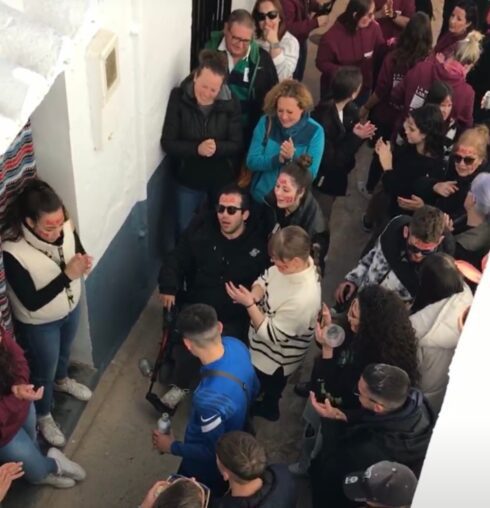
Ample alcohol is required, especially local red wine. Even the music is accompanied by percussion, created by banging the fork against a bottle anis, a traditional Andalucian liqueur made from anis seeds. Bailey’s Irish cream is also very popular these days. With maracas, cymbals and tambourines – as well as guitars and accordions – and up to forty lusty singers, the fiesta is LOUD.
Robin Smith, who owns a holiday home in Cañar, reflected ruefully the afternoon after the fiesta I didn’t get much sleep last night and it’s amazing that the party is still going on today…
Many ‘active tourists,’ who are keen to explore the Alpujarras via the numerous hiking trails, have a thriving holiday business. The European Path GR 47 follows an ancient trade route that runs from Tarifa, near Gibraltar, to Delphi, Greece. The steep, winding road leading to the white village at 1,040m above sea-level is a challenge for hundreds of mountain bikers. No through road exists. So the return journey is just as challenging – with spectacular views to compensate for the wear and tear on the brakes – and on the nerves!
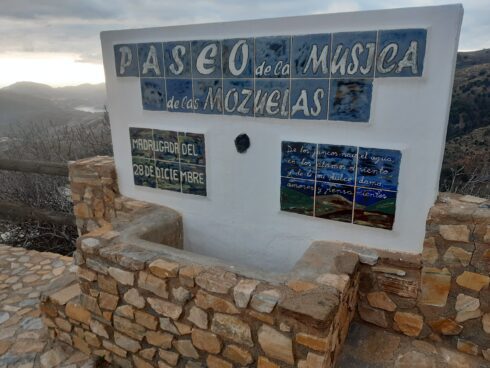
In this ‘Twixmas,’ the time between Christmas and New Year, there are few hikers or bikers. The musica de los mozuelas festival (music of the maidens), is not only for tourists. Even though a blue and white-tiled plaque is displayed at the village entrance, it seems that the festival is NOT for tourists. The whole family takes part, from young girls in primary school to elderly widows.
Manuel Alvarez Guerrero of the PSOE-A, (Socialist Workers’ Party of Andalucia), is happy that this tradition continues and attracts participants from nearby towns:
The population of Cáñar is multiplied during this party in which there is a very lively atmosphere, since there are many people who come from different corners of the region and outside it to sing to the “mozuelas”, comments Guerrero.
The population of Canar is very small. According to the website of the ayunamiento (municipality), Cañar has 397 inhabitants, of whom 211 are men and only 186 women. Perhaps it is this statistic that keeps alive the tradition of the serenades: with women in the minority, the men have to try that bit harder to impress the opposite sex…
Most likely, it’s because of the Spanish love for good parties. This party goes on all night and ends at 10 am in a cafe-bar with a brunch. After the meal break, married men, and even some older people, join the tour to reinforce the serenade. They start from where they staged the last one. They ask for money this time. The donations… including some of as much as fifty euros… are collected in a piggy bank.
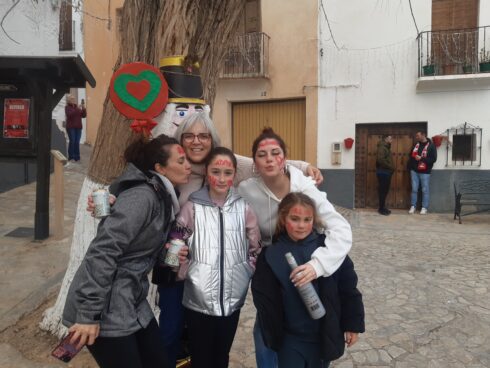
The bonfire is then lit on the village’s square next to Santa Ana’s church. Architecture has not changed since Christians drove the Moors out of Andalucia, in 1492. The mosque that was originally located on this site has been replaced by a church. Today, the Christmas decorations feature tinsel reindeer that have little step ladders with face-shaped openings. Locals can take selfies in front of these.
Photogenic revellers with their painted faces and musical instruments. As the iconic Spanish poet Federico Garcia Lorca observed when he visited Cañar in 1926,
There are two distinct races. Nordic, Galician Asturian etc. and the Moorish. People with blue eyes and people with… indescribable eyes. I saw the queen of Sheba shelling grain on a wall painted in bitumen and violet, and a child king dressed as a barber’s son.
Lorca’s The Unfaithful Widow (La Casada Infiel) was inspired by the local folk song. It tells the story of a man who seduces a young maiden (mozuela) by the river – only to discover later that she is aleady married.
Lorca is immortalised in this place. Tiled plaques with quotes from Lorca’s poems decorate the village. A large information board explains his connections to this region.
Poems, passion and traditional almond-flavoured polvorones are on the menu for the 29th of December. The fiesta continues. The fiesta continues.
What about the piggy bank?
It’s then ceremonially broken open, and the coins and bills are collected for the sweets and gifts for the kids at the next fiesta. It’s only a week away, when the Feast of the Epiphany (Tres Reyes in Spanish) heralds the arrival in Cañar of the Three Kings, bearing gifts for Baby Jesus. In the mountains, there are no camels. Not even on donkeys. No – Melchior, Caspar and Balthazar drive around the village on a tractor.
But that’s another story…
 Costa News Spain Breaking News | English News in Spain.
Costa News Spain Breaking News | English News in Spain.
